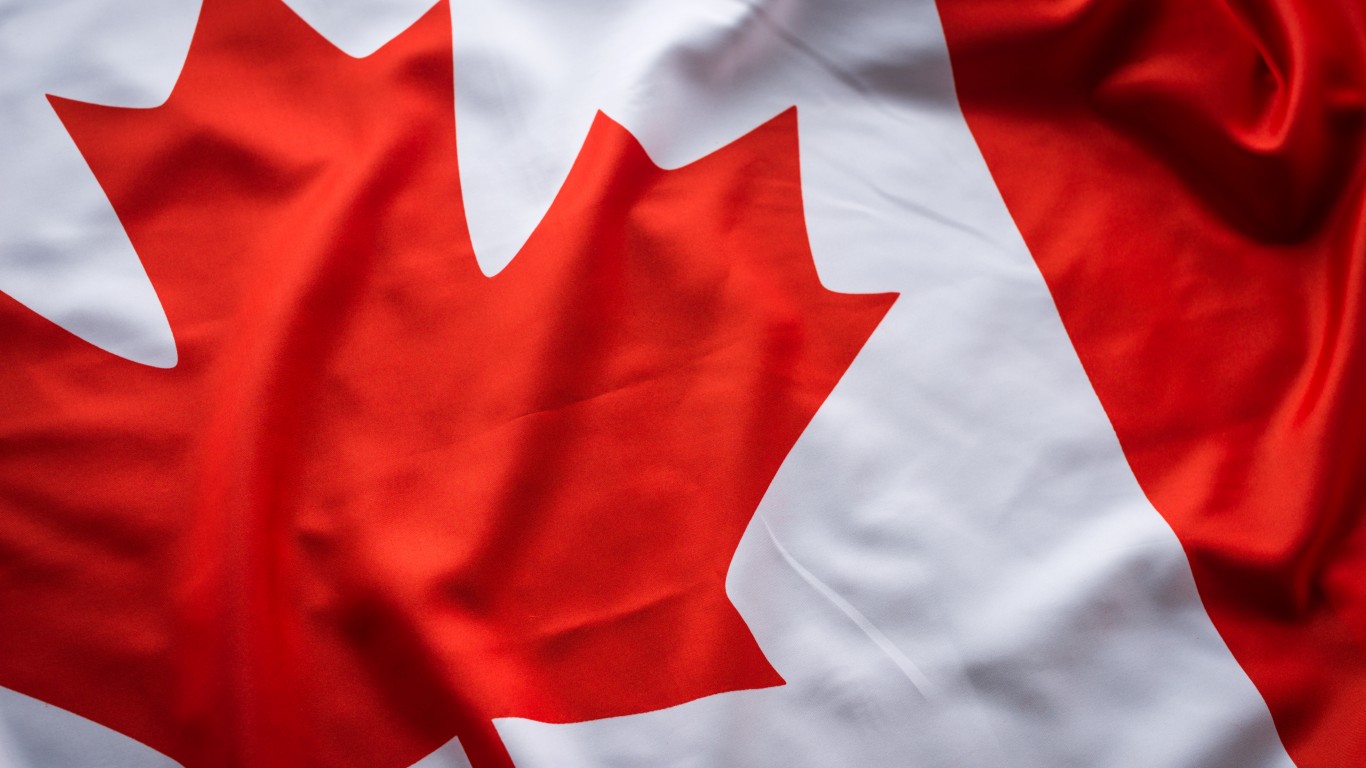Companies and Brands
How Government's Slow Walk on Marijuana Hurts Aphria Stock

Published:

Canada’s cannabis industry contributed a minuscule C$8.2 million (US$5.7 million) to the nation’s gross domestic product (GDP) in February. However, its contribution was 25% higher than in February 2019, nearly five times more than the next fastest growing sector: finance and insurance.
Growing from a tiny base is a lot easier than growing from a big one. Canada’s cannabis industry faces enough headwinds to make its growth rate seem all the more impressive. After filing a surprisingly good third-quarter earnings report earlier this month, Aphria Inc. (NYSE: APHA) stock traded down more than 2.5%, as of the close on April 29.
Over the same two-week period, cannabis stock Canopy Growth Corp. (NYSE: CGC) rose about 15.5%. Aurora Cannabis Corp. (NYSE: ACB) increased more than 6% in that time, and Cronos Group Inc. (NASDAQ: CRON) saw a gain of nearly 6%.
What’s most surprising about the stock market’s reaction to Aphria’s third-quarter financial results is that no other major cannabis company comes anywhere near making a profit. Aphria’s balance sheet also shows a cash pile of C$515 million, another point of difference between it and other Canadian pot growers.
Canadian federal and provincial governments have moved slowly. Regulating the new cannabis industry took longer than expected. Legal sales of recreational pot in Canada did not begin until the fall of 2018, even though legislation approving sales was passed almost 18 months earlier.
Excise and other taxes are high and leave the country’s legal growers competing against black market suppliers who pay no taxes or licensing fees. Canada also restricts cannabis companies’ ability to build their own brands.
In Ontario, Canada’s highest population province, only about two dozen retail stores were open a full year after sales began. No more than three dozen of them are open now. Buying adult-use cannabis from a black market supplier is not only cheaper but easier.
Health Canada also failed to move quickly to license derivative products (known as Cannabis 2.0) like edibles, vapes, infused beverages, topicals, tinctures and concentrates. Sales of derivatives were expected to boost revenues and profits and to keep investors buying stock in Canada’s cannabis companies. That still hasn’t happened.
Then there’s the coronavirus pandemic.
While it may seem that stay-at-home orders would lead to higher sales, Canadian recreational pot sales began falling in February. That was before the pandemic had become as widespread as it is now. According to data from Statistics Canada, February sales dropped from C$154.1 million in January to C$149.9 million. Sales fell in eight of the country’s 13 provinces.
In Ontario, where sales are highest, only a single government-owned retailer is allowed to sell cannabis online. Stores were closed briefly in early April, before being declared an “essential service” and allowed to reopen and provide customers with curbside delivery.
Aphria and Canada’s other pot companies have no choice but to take a seat on the sidelines. They conserve cash wherever possible and prepare for when people return to something like normal life. Aphria’s cash hoard offers the company some insulation against declining sales.
Yet, Aphria’s most potent weapon may be its medical cannabis business. The company’s German subsidiary, CC Pharma, saw business jump by 50% in its fiscal third quarter. The U.S. medical marijuana market continues to grow as well, but that further growth may be stymied until the coronavirus pandemic abates. In countries like Canada and Germany, where all residents are covered by national health systems, medical marijuana prescriptions are paid by the government.
The average American spends $17,274 on debit cards a year, and it’s a HUGE mistake. First, debit cards don’t have the same fraud protections as credit cards. Once your money is gone, it’s gone. But more importantly you can actually get something back from this spending every time you swipe.
Issuers are handing out wild bonuses right now. With some you can earn up to 5% back on every purchase. That’s like getting a 5% discount on everything you buy!
Our top pick is kind of hard to imagine. Not only does it pay up to 5% back, it also includes a $200 cash back reward in the first six months, a 0% intro APR, and…. $0 annual fee. It’s quite literally free money for any one that uses a card regularly. Click here to learn more!
Flywheel Publishing has partnered with CardRatings to provide coverage of credit card products. Flywheel Publishing and CardRatings may receive a commission from card issuers.
Thank you for reading! Have some feedback for us?
Contact the 24/7 Wall St. editorial team.